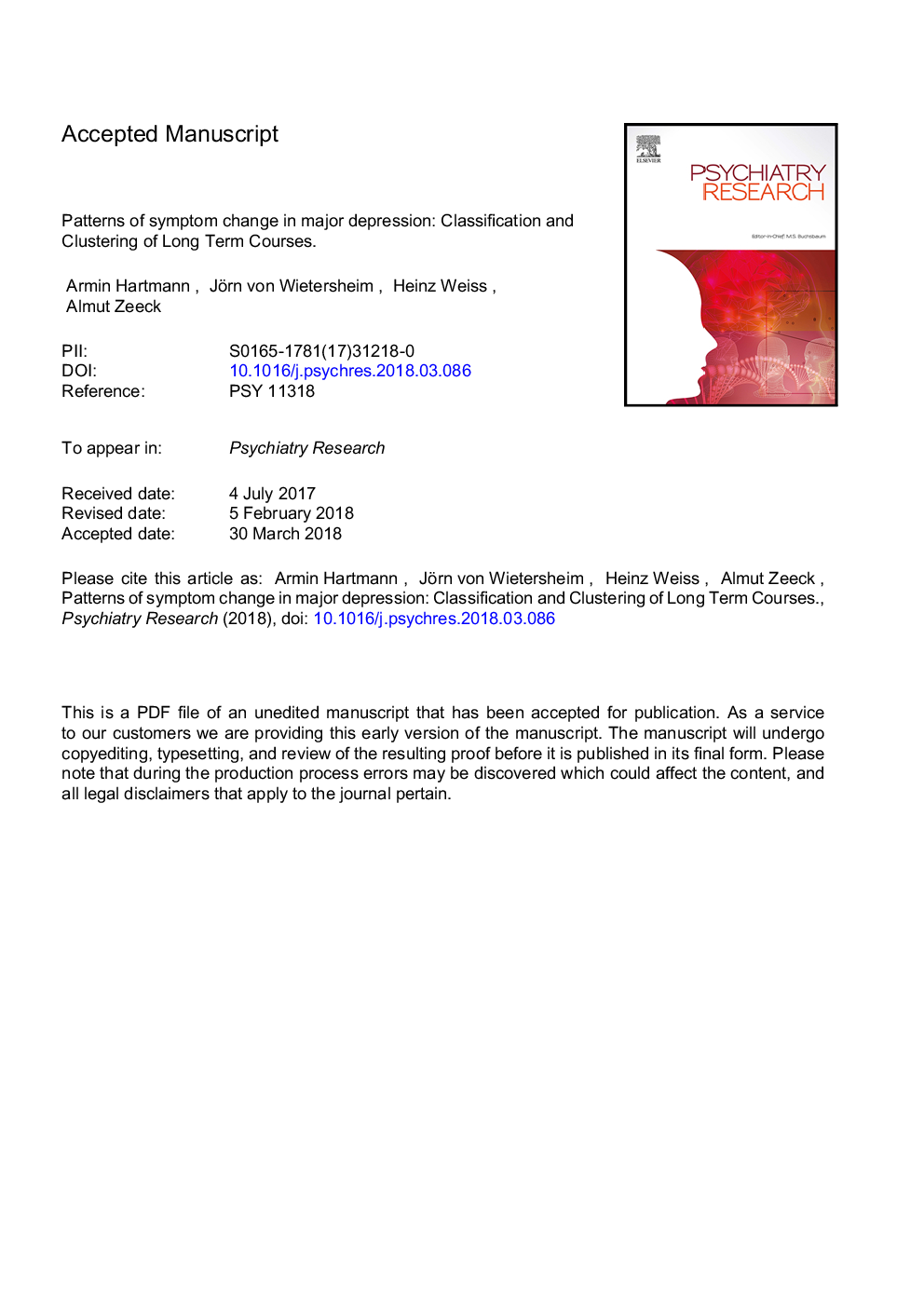| Article ID | Journal | Published Year | Pages | File Type |
|---|---|---|---|---|
| 6811388 | Psychiatry Research | 2018 | 40 Pages |
Abstract
Outcome data (N_completeâ¯=â¯518, 4 time points, 1 year of observation time) from a large naturalistic multi-center study on the effects of inpatient and day hospital treatment of unipolar depression were used to identify clusters of symptom trajectories. Common outcome classifications and statistical methods of longitudinal cluster analysis were applied. However, common outcome classifications (in terms of e.g. remission, relapse or recurrence) were not exhaustive, as 49.3% of the trajectories could not be allocated to its classes. Longitudinal cluster analysis reveals 7 clusters (fast response, slow response, retarded response, temporary or persistent relapse, recurrence, and nonresponse). Nonresponse at the end of treatment was a predictor of poor outcome at long term follow up. The classification of patterns of symptom change in depression should be extended. Longitudinal cluster analysis seems a valid option to analyze outcome trajectories over time if a limited number of time points of measurement are available.
Related Topics
Life Sciences
Neuroscience
Biological Psychiatry
Authors
Armin Hartmann, Jörn von Wietersheim, Heinz Weiss, Almut Zeeck,
